Submitted by WA Contents
London Design Festival unveils 2016 installations
United Kingdom Architecture News - May 05, 2016 - 14:18 12208 views

The Smile by Alison Brooks, Alison Brooks Architects.
London Design Festival (LDF) is a platform for innovative design initiatives, showcasing ideas from more than 300 partners who represent the best of London’s design community and LDF 2016 will be held between 12-25 September, 2016 at Trafalgar Square, London. Widespread participation reflects the role of creative businesses as a leading force in the city’s economy, which represents the UK’s fastest growing sector.
This year, over 400 events and installations will take place, from an engaging programme at the Victoria and Albert Museum to a colourful and eccentric crazy golf course in the heart of the city: Trafalgar Square. These interventions reflect the stimulating diversity of creative thinking, and are all united in their ability to inspire, entertain and arouse curiosity.
“Since the London Design Festival started in 2003 it has always welcomed the world to our great city but has also inspired over 100 other cities to produce their own annual design event. If you believe in design you know it can make the world a better place and I say the more international design dialogue the better!'' said Sir John Sorrell, Chairman, London Design Festival.
''So, I am excited that this year’s Festival will run parallel with the inaugural London Design Biennale, which will bring 40 countries to London to present design installations at Somerset House, based on the theme Utopia by Design.''
''The Biennale will overlap with our city wide Festival programme and the unique combination of these two events will offer a world wide window on design - a must see design experience for design lovers from all over the world'' Sorrell added.
Through an initiative that was first introduced in 2007, the Festival commissions the world’s best designers and architects, as well as pioneering new talents, to create something extraordinary in response to a material, theme or location. These site- specific installations have appeared in some of London’s most prominent and best- loved spaces, including the V&A, Southbank Centre, Tate Modern and Trafalgar Square.
Over past years, the Festival has hosted several interventions in Trafalgar Square, including a giant chess set, a Sound Portal and a light show mounted by an assembly line of robots from the Audi production line.
Such landmark projects have brought an awareness of design and its possibilities to the very centre of London and its cultural life:
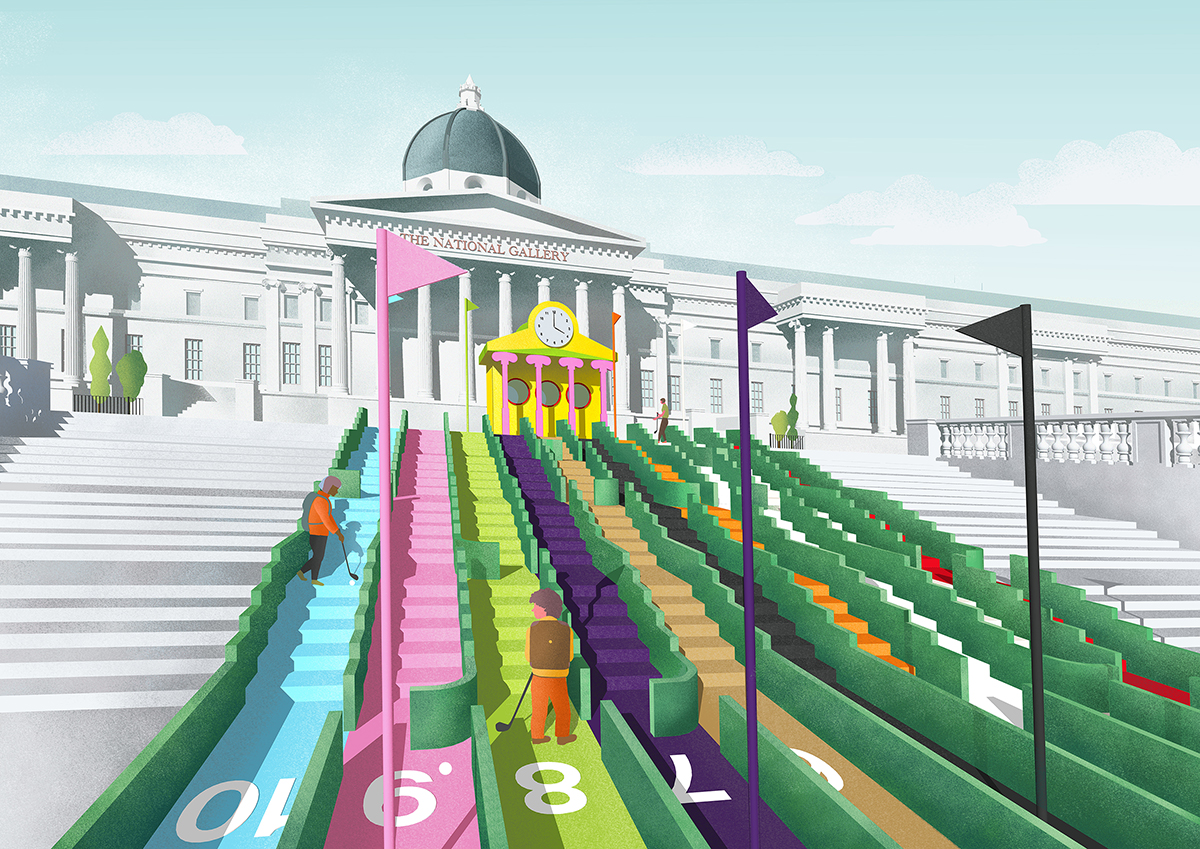
Landmark project: Visionary Crazy Golf at Trafalgar Square. Designed by Atelier Bow-Wow, Camille Walala, HAT Projects with Tim Hunkin, Mark Wallinger, NEON, Ordinary Architecture, Paul Smith, Tom Dixon, the late Zaha Hadid.
On April 25, 2016, the London Design Festival launched a Kickstarter campaign to bring Visionary Crazy Golf to Trafalgar Square, with holes created by some of the UK’s most renowned architects, artists and designers as well as emerging talents. The aim is to raise £120,000, and the course will be open from 16-22 September, coinciding with the Festival itself. Members of the public who pledge funds, from £5 up to £5,000, will receive a reward by one of the designers, who include Paul Smith, the late Zaha Hadid, Tom Dixon, Mark Wallinger, Camille Walala, Ordinary Architecture, HAT Projects with Tim Hunkin, Neon Studio, and Atelier Bow Wow.
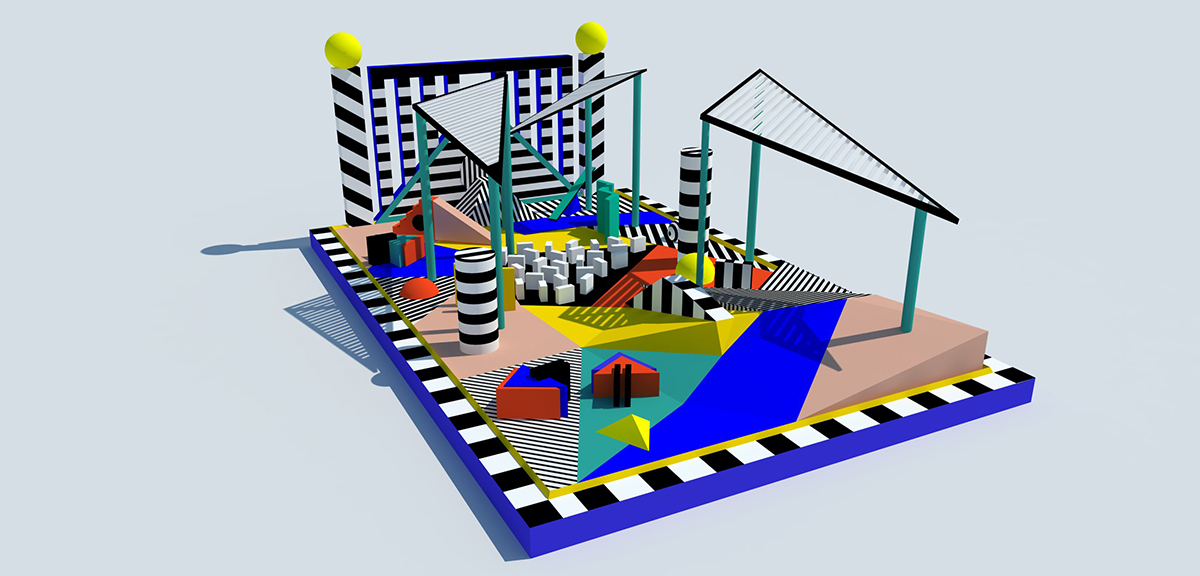
Camille Walala
One of Britain’s most distinguished designers, Paul Smith, is the curator and ambassador for the scheme, and has created limited edition accessories – from socks to scarves – to celebrate the project and as Kickstarter rewards. Smith will transform the steps from the National Gallery into a riot of different coloured stripes, topped by a neo-classical clubhouse that echoes the museum, but has a turf roof and putters for columns. Zaha Hadid designed an undulating course with two levels that will snake elegantly between Trafalgar Square’s lions.
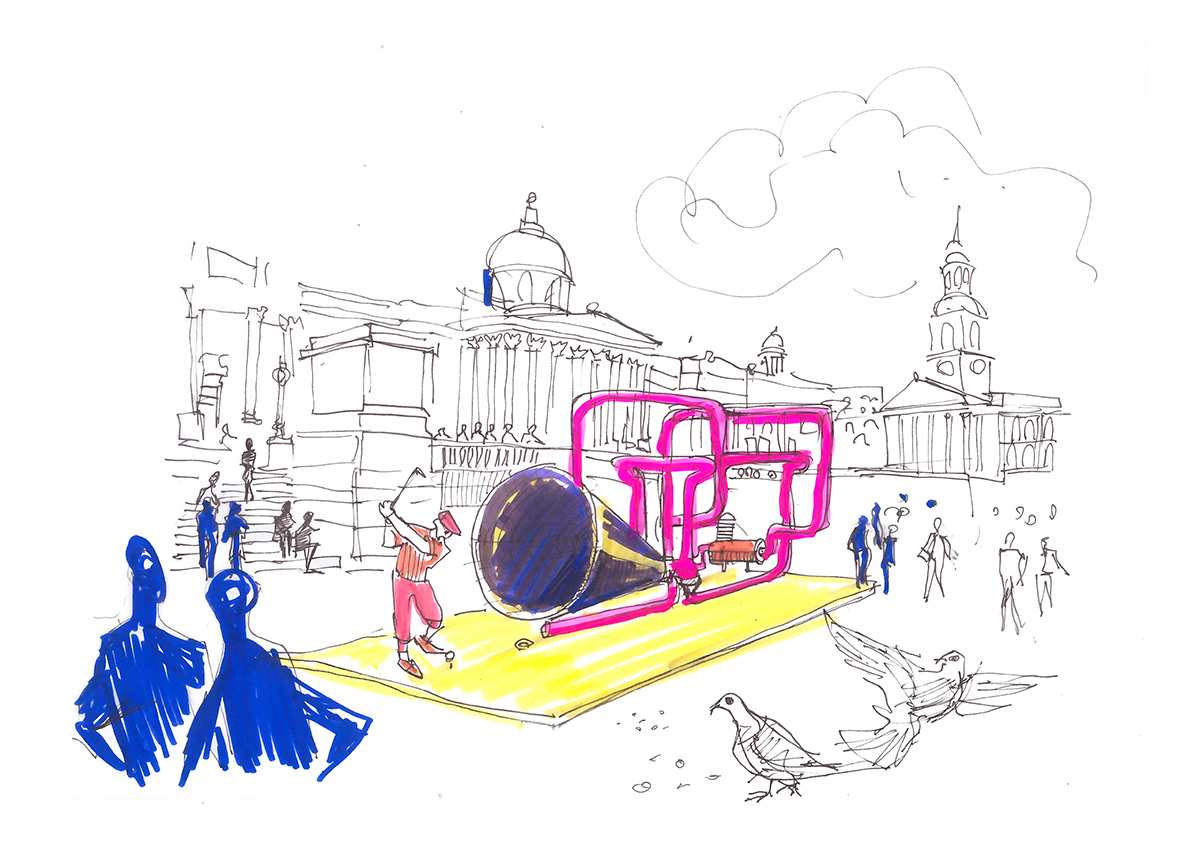
Tom Dixon
Other holes include Tom Dixon’s, which consists of a funnel and nest of pneumatic tubes; a circuitous maze by Mark Wallinger; a netted driving range by the Japanese studio Atelier Bow-Wow; and a cross-section by Ordinary Architecture of a giant pigeon, through which players can hit their golf balls. Each design team will create a miniature pavilion that makes a statement about the future of architecture and fills Trafalgar Square with Pop Art colours and avant-garde forms. They will be futuristic, functional, fun and free for the public to play.
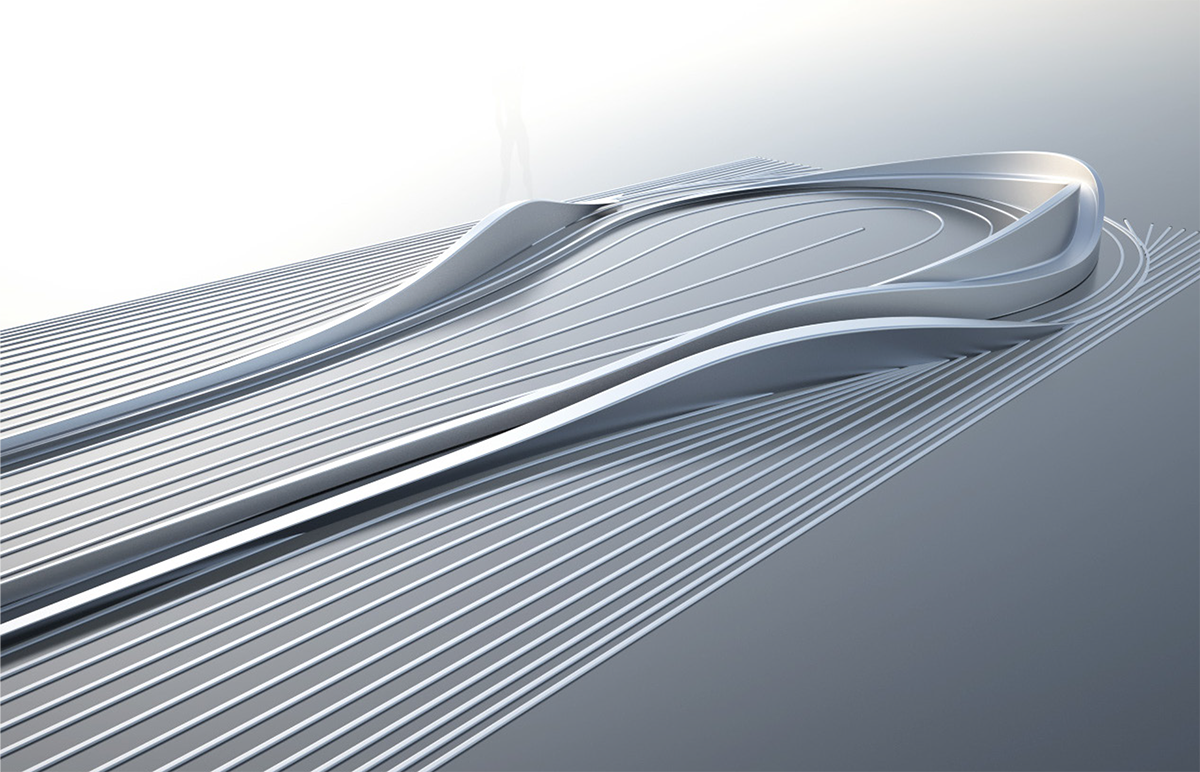
Zaha Hadid
On March 31, Zaha Hadid sadly passed away. Amongst many other architectural initiatives, she was involved in the design of this crazy golf hole – which so evidently reflects the organic forms for which she became so well known. The practice will continue, and they would like to complete this project as a memorial to her.
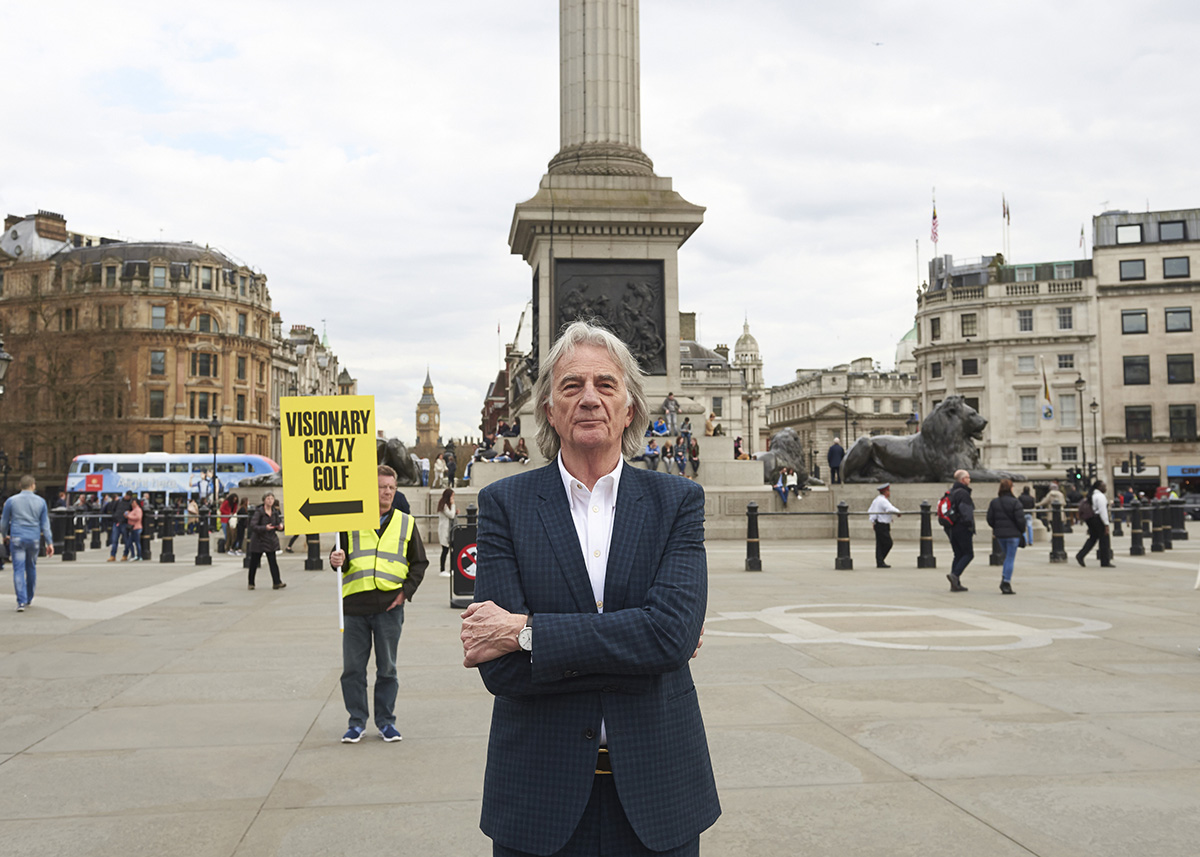
Paul Smith. Image © Tina Hill
''All of the designers I invited to take part, both distinguished and emerging talents, have been given free rein to be playful, original and have fun. The result will be a wonderful and accessible display, right at the heart of London, which will celebrate design and creativity, and explore engineering and new materials. It will both entertain and inspire. Please help make it happen!'' said Paul Smith, curator and ambassador for the project.
Ben Evans, Director of the London Design Festival, commented: ''We expect Visionary Crazy Golf to be one of the most popular Festival Landmark Projects to date. We’re sure it will attract a varied audience, from design aficionados to small children, attracted by the invention, playfulness and creativity of the course. We look forward to seeing how they all interact in their different ways with the imaginations of some of our best known designers and architects.''
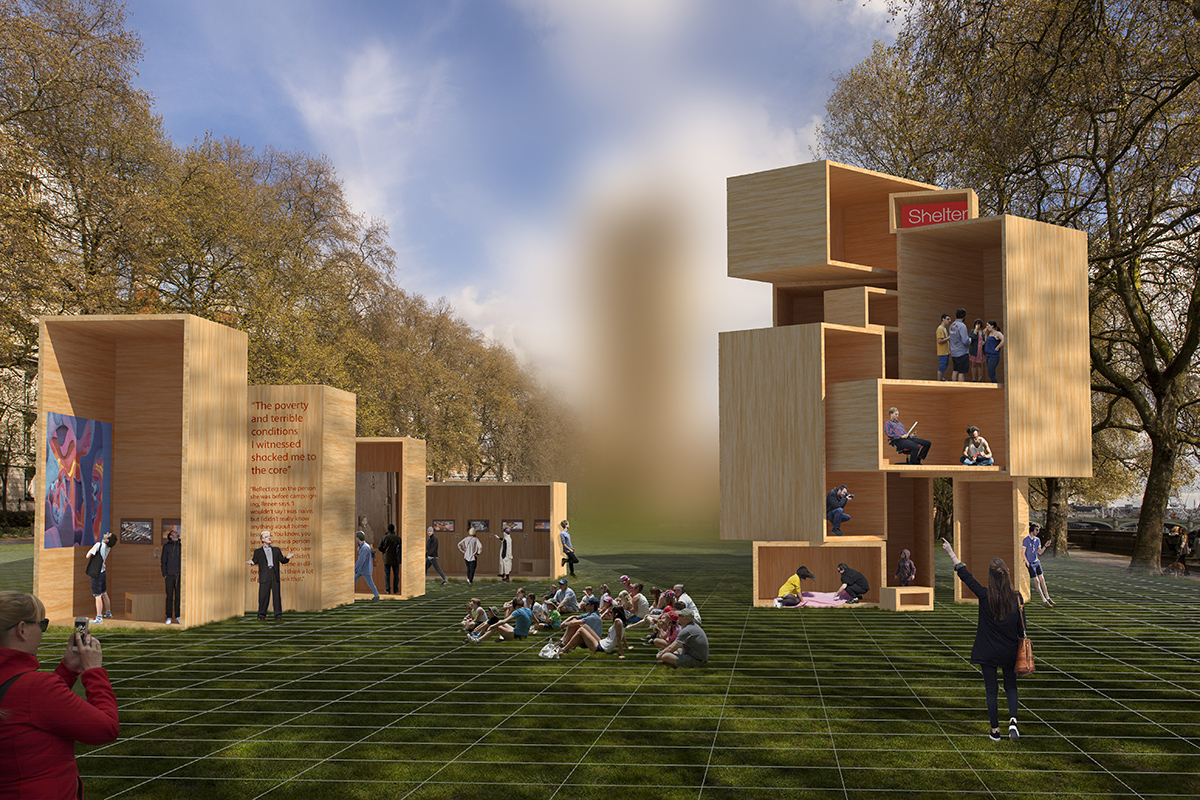
Landmark project: Baboushka Boxes by By dRMM.
Housing has never been a more topical issue, especially in our urban centres, and it is one that Shelter and Legal & General seek to address through an experiential installation designed by dRMM. The interactive exhibition will feature a series of box- like structures made from cross-laminated timber.
''Baboushka Boxes is a conceptual piece; a mini manifesto for change. Change in the design, procurement, construction and user experience
of housing. Housing is here represented as a prefabricated, strong, adaptable timber family of boxes, nested for transport. Construction that is socially, ecologically and economically sustainable. Just add insulation and glass'' said Prof Alex de Rijke, dRMM.
dRMM’s pioneering use of CLT (Cross Laminated Timber) since 2006 includes Endless Stair, a Landmark Project for the 2013 London Design Festival featuring the invention of cross laminated tulipwood. Legal & General will take CLT technology to the next level with new UK mass production facilities making thousands of modern, energy efficient homes. For Baboushka Boxes, CLT is reduced to it’s purest form; the carefully made, well proportioned box.
Stacked like an inhabited sculpture, these living boxes can be re-arranged to suit individual or communal needs. The interiors are furnished, coloured or projected onto. Spaces between boxes form external rooms and routes.
''The main idea of the installation is to use our most modern material, engineered timber, to speculate on the nature and needs of current society and future living'' he added.
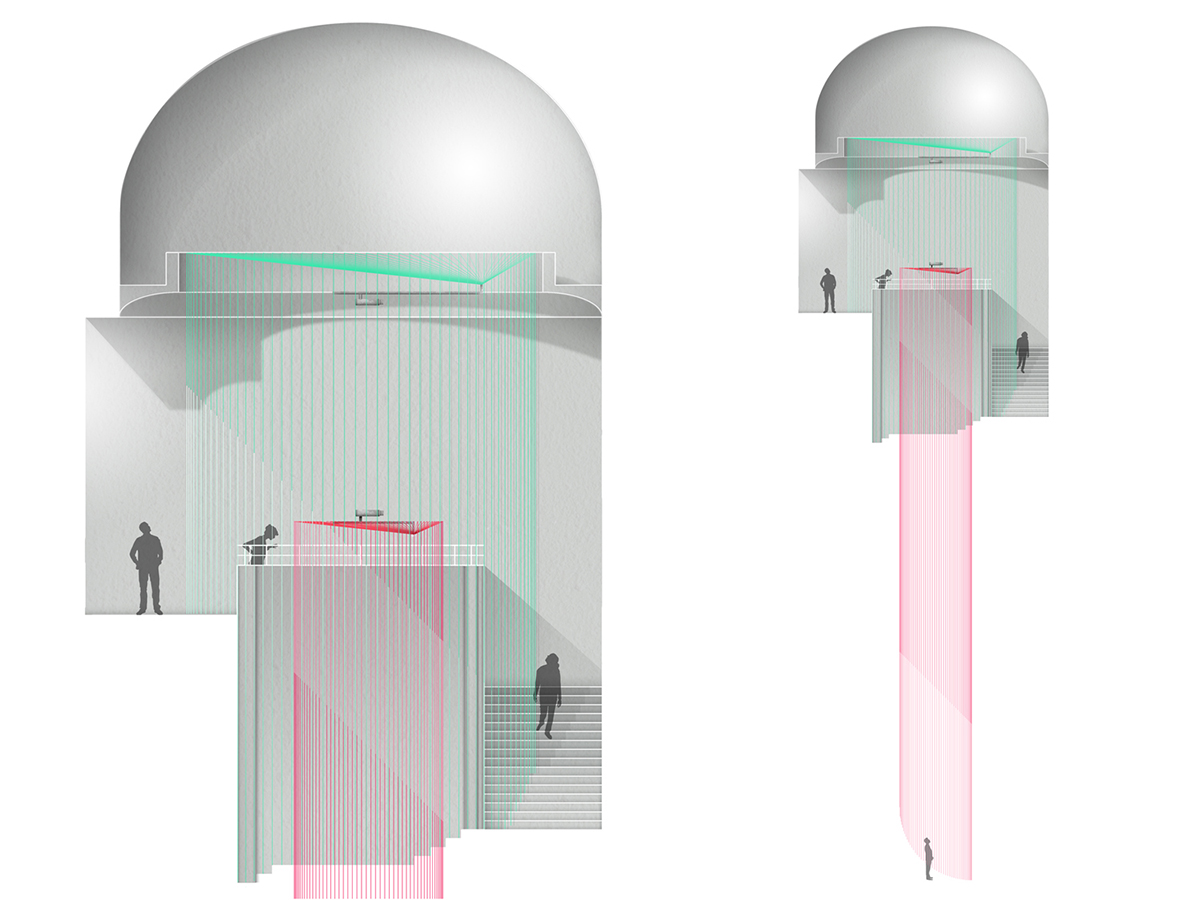
The Green Room
The Italian luxury watch maker Panerai are collaborating with the London-based design duo Glithero, founded by British designer Tim Simpson and Dutch designer Sarah van Gameren, known for creating mesmerising, time-based mechanical installations. The designers’ installation The Green Room at the V&A will be located in a stairwell in the Museum.
Emulating the circular motion of the arms of a clock, The Green Room is both interactive and performative. The space will be delineated by veils of colourful strings, with hues blending into each other, creating an optical effect. The strings will be lifted and then dropped by a motorised revolving CAM arm, prompting visitors to methodically travel through the immersive installation. Conceptually responding to the passage of time, the piece will be in a constant state of transformation through these slow, choreographed movements.
The Green Room will take over a stairwell in the Museum, which will be transformed by designers’ intervention for the first time. The raking light that streams in through the large round windows creates a telescopic feeling; enhancing the cinematic experience.
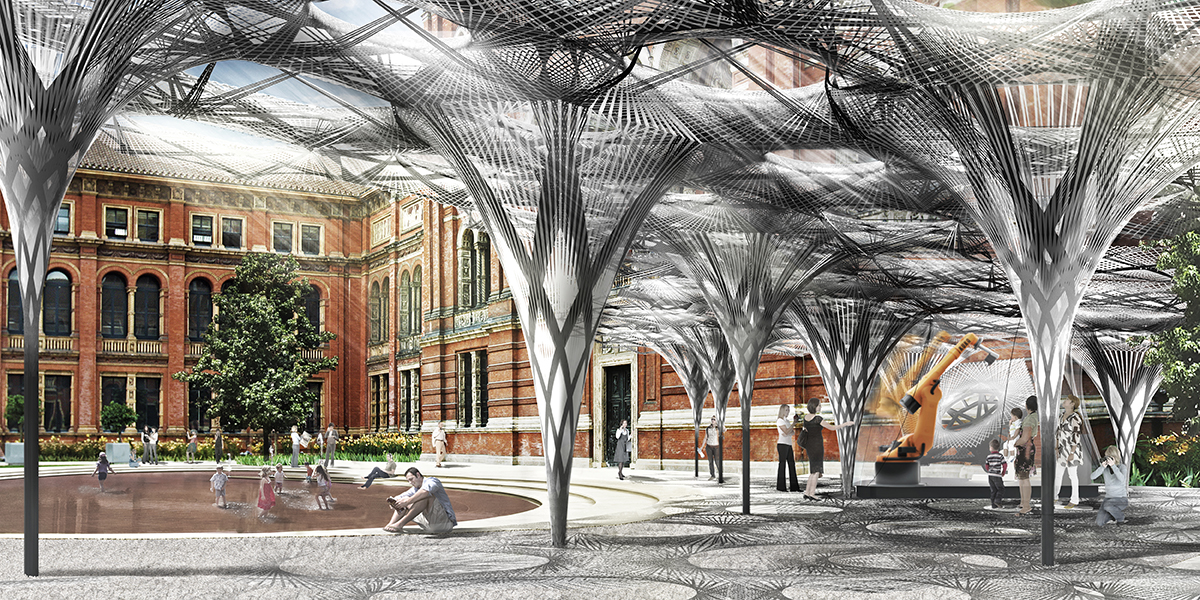
V&A project Engineering Season by Achim Menges with Moritz Dörstelmann, structural engineer Jan Knippers and climate engineer Thomas Auer. Image © Elytra Filament Pavilion by Thomas Auer, Moritz Dörstelmann, Jan Knippers, and Achim Menges, John Madejski Garden.
A newly-commissioned Garden installation by experimental architect Achim Menges with Moritz Dörstelmann, structural engineer Jan Knippers and climate engineer Thomas Auer will launch the Season. Their first ever public commission in the UK, Elytra Filament Pavilion (18 May – 9 October 2016), will explore the impact of emerging robotic technologies on architectural design, engineering and making. Inspired by a lightweight construction principle found in nature, the fibrous structures of the forewing shells of flying beetles known as elytra, the Pavilion will be an undulating canopy of tightly-woven carbon fibre cells created using a novel robotic production process. The Pavilion will grow over the course of the V&A Engineering Season in response to data on structural behaviour and patterns of inhabitation of the Garden that will be captured by real-time sensors in its canopy fibres.
The first major retrospective of the most influential engineer of the 20th century, Engineering the World: Ove Arup and the Philosophy of Total Design (18 June – 6 November 2016) will focus on the design philosophy of Ove Arup, the pioneer of a multidisciplinary approach to design that has defined the way engineering is understood and practiced today. On display will be objects relating to Arup’s early projects, such as the Penguin Pool at London Zoo, as well as renowned projects by the firm including Sydney Opera House and the Centre Pompidou in Paris, including previously unseen archival materials. These will be shown alongside recent projects by Arup, the global engineering consultancy, represented by large-scale prototypes and building components as well as digital animations and models. The Engineering Season will also encompass displays, events and digital initiatives dedicated to global engineering design.

The Smile by Alison Brooks, Alison Brooks Architects
Alison Brooks has designed an urban installation for this year’s London Design Festival that showcases the structural and spatial potential of cross–laminated hardwood, using American tulipwood. The Smile is a structure that can be inhabited and explored, and which offers a new way of looking at the city.
Using construction sized panels of hardwood CLT for the first time, Alison Brooks’ concept is of a 3.5m high and 36m long curved rectangular tube - a very pure and efficient structural form, and the first ever mega-tube made of timber.
The timber tube is curved into a long upside down arc – hence its name – which, like a wheel, only touches the ground at one point. The, curved form allows the Smile to cantilever out from its centre point to reach out into space. The cantilevers hover above the ground, creating sheltered outdoor spaces. Each end of the tube is open to the air; cinematic apertures that offer balcony views to the landscape. At night these apertures will project light from each end, creating an endless smile.
The curved floor, curved ceiling and curved walls create a dynamic and unfamiliar internal space. It is an undulating environment, something between a landscape, an adventure playground, a bridge and a diving board.
Arup’s engineering team are working with us to derive the most efficient structural form, using only 80 cubic metres of wood to create a 180 square metre space. The forces of tension and compression working in the timber CLT walls will be expressed by perforations in its elevations. These will generate patterns of light across the Smile’s interior spaces during the day, to become an urban lantern at night.
London Design Festival has also revealed its new visual identity that focuses on the details of design undulating with typography.
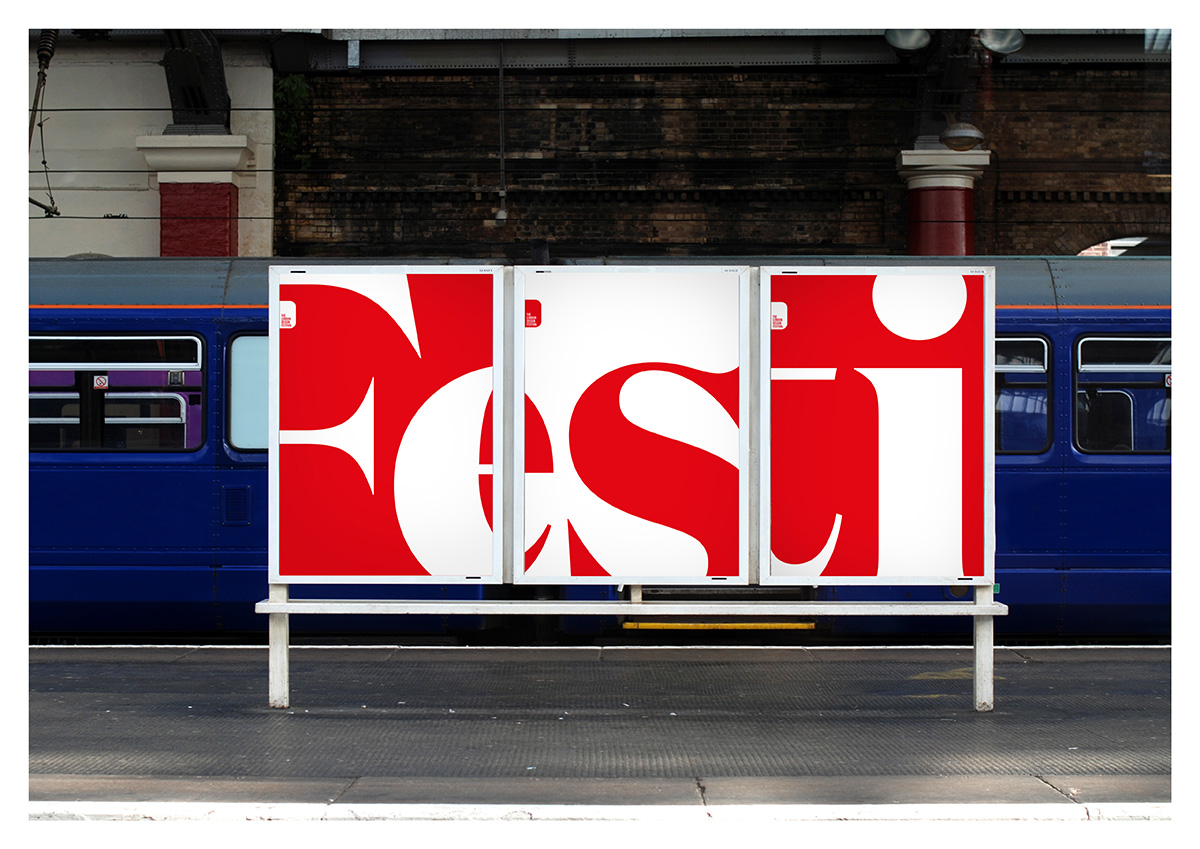
This year’s London Design Festival visual identity celebrates what often goes unnoticed, zooming into the negative spaces and elegant swashes of the typographic message itself. Highlighting detail can change the scale and composition altogether, offering us ways to appreciate and experience design from a new perspective.
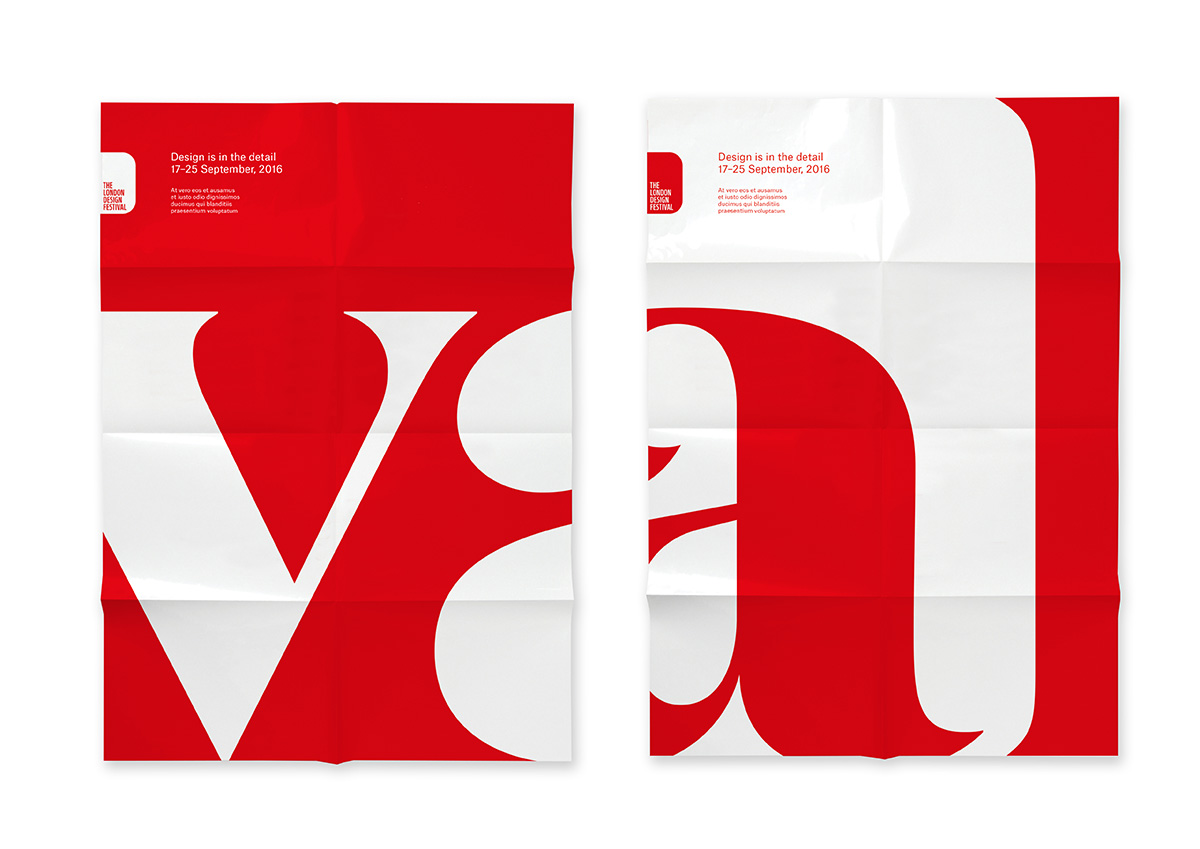
''The wonderful thing about type is when you use it in such a large scale and then crop it, you are often left with wonderful positive and negative shapes which have come out of the individual letterforms. The result is unmistakedly “The London Design Festival” but introduces an element that is engaging and playful as well as being classic and modern. As the Festival represents such a diverse range of sectors, its important our solution has the flexibility to reflect such different areas of design, our partners and contributors.'' commented Domenic Lippa, Partner at Pentagram Design.
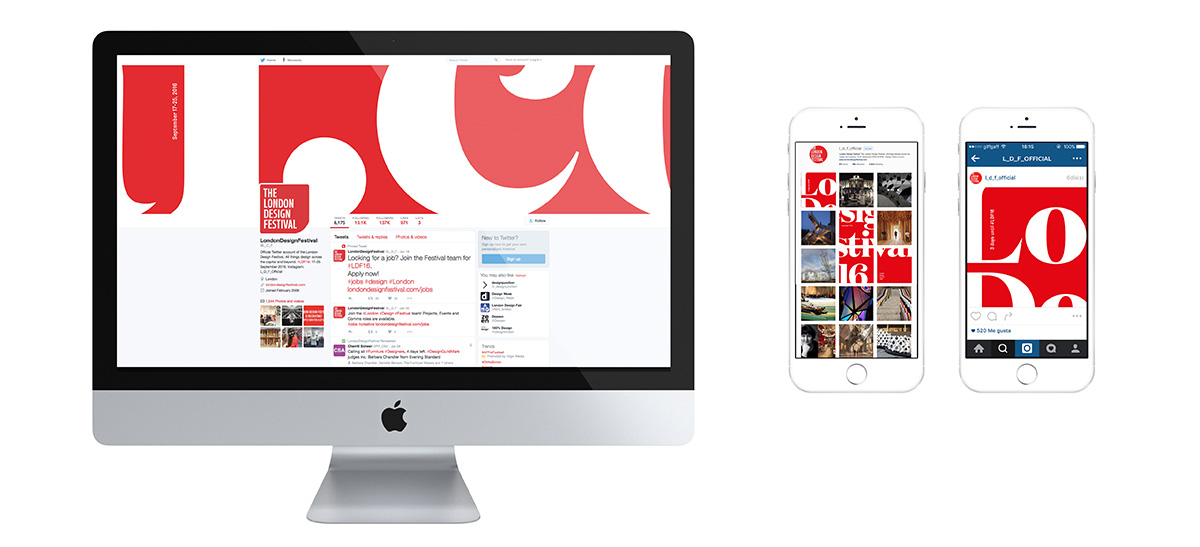
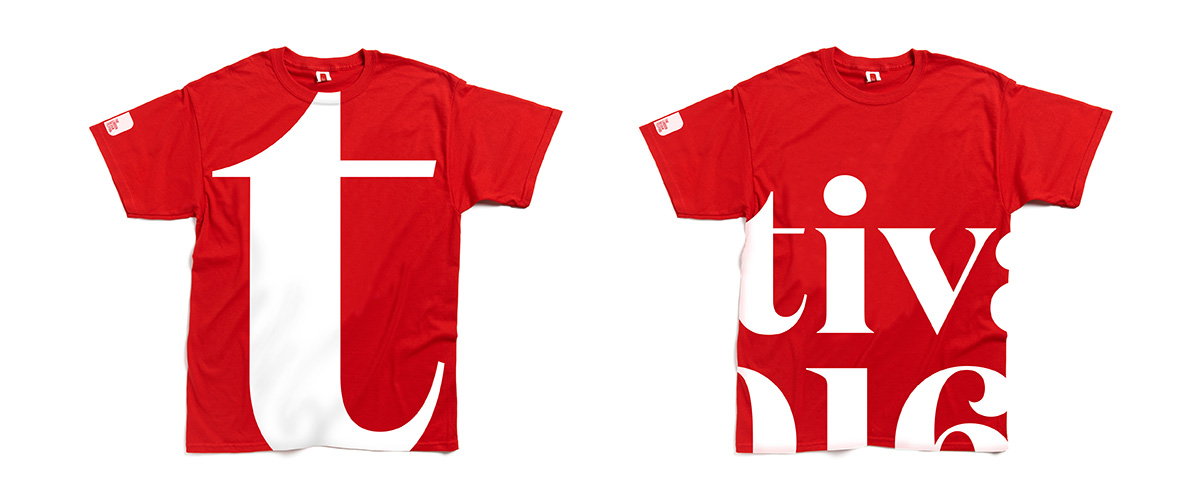
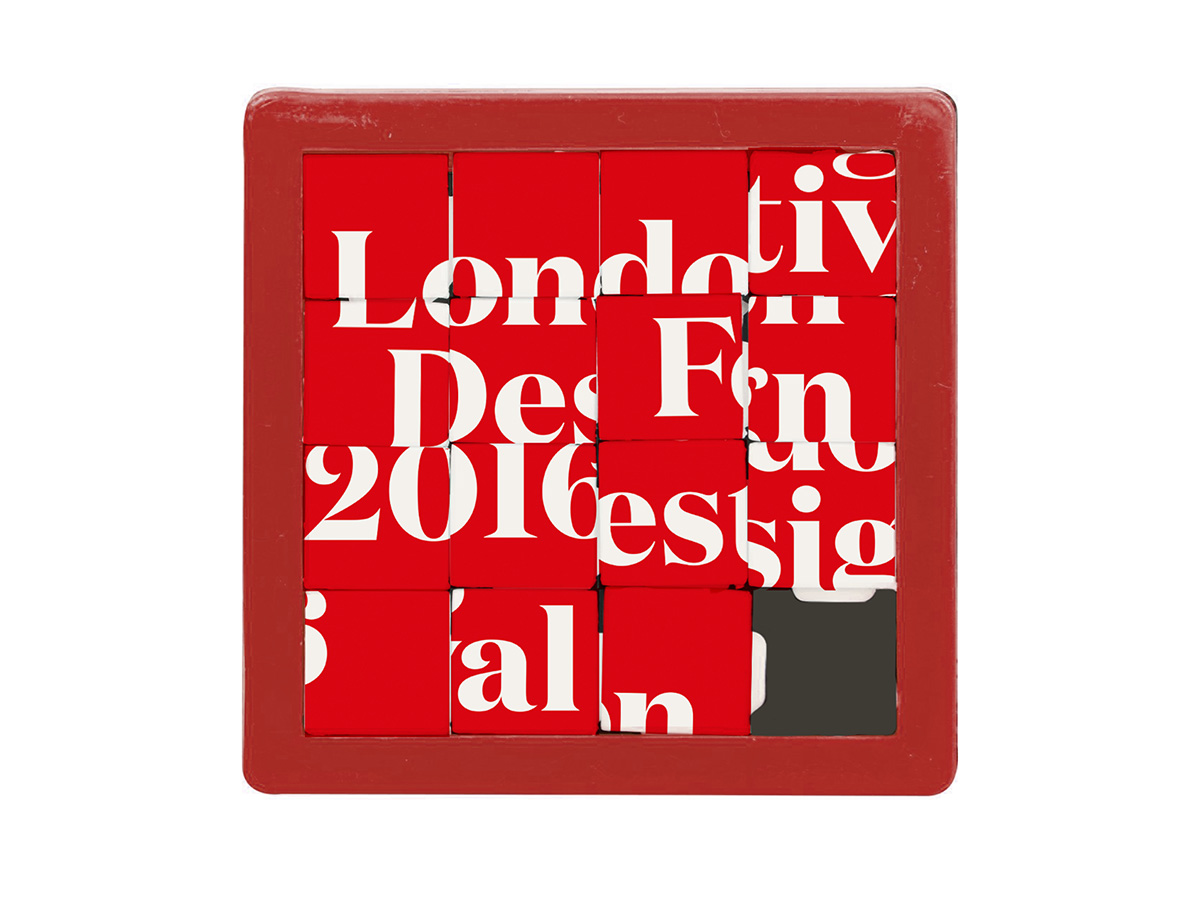

Follow LDF1026 on Twitter via #LDF16 hashtag.
Also see Facebook, Instagram and Google+
All images courtesy of London Design Festival 2016 / 17 – 25 September.
> via London Design Festival
